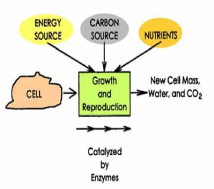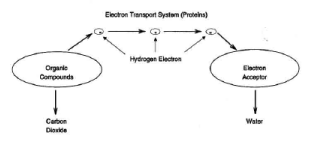

| Definition | ||||
| In situ bioremediation has been proven
effective in remediating contaminated soils resulting from, for example,
oil spills. The technique involves using microorganisms to biodegrade
contaminants into less harmful forms. In order for this biodegradative
process to occur, microorganisms require an energy source, a carbon
source, and certain nutrients. |
||||
 |
The energy source and carbon source is generally supplemented by the contaminants themselves, (organic compounds represented below in Figure 1.2). To transform and consume the energy and carbon source provided by the contaminants, microorganisms undergo a series of oxidation-reduction reactions. Like every living organism, microorganisms generate energy within these oxidation-reduction reactions through the transmission of electrons passed from an electron donor (energy source from the contaminant) to an electron acceptor (commonly molecular oxygen in bioremediation applications). Oxygen, as the electron acceptor, essentially gives the microorganisms the capability to oxidize the carbon source of contaminants into carbon dioxide (CO2) and water (H20). Figure 1.2 Oxidation-Reduction in Metabolism | |||
| Fig. 1.1 Cell Metabolism Processes | ||||
|
||||
Fig. 1.2 Oxidation-reduction
in Metabolism |
||||
| In situ bioremediation simply enhances this degradative process by supplying microorganisms with optimal levels of the nutrients and environmental conditions they require. Bioremediation falls into two categories, biostimulation and bioaugmentation. | ||||
